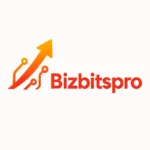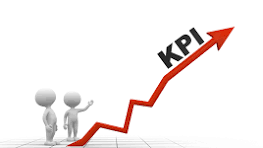What the Best Affiliate Marketers Taught Me when I thought I knew it all. The dynamic AI market is creating new rules every day so you need to get with it

Post by Peter Hanley coachhanley.com
When I started diving into affiliate marketing, I realized pretty quickly that not all strategies are created equal. After studying the approaches of industry leaders like Matt Diggity, Gael and Mark from Authority Hacker, and top ClickBank clients pulling in six and seven figures, I’ve picked up some game-changing lessons that completely shifted my approach. Here’s what I’ve learned from the best in the business.
The Core Lessons That Actually Work
The biggest revelation? The affiliate marketing landscape has changed dramatically. The old playbook of relying solely on Google search traffic no longer cuts it. Top performers aren’t putting all their eggs in one basket anymore—they’re diversifying across multiple traffic channels like newsletters, social media, YouTube, and native advertising platforms.
Quality always beats quantity. Whether we’re talking about your email list or your affiliate partnerships, every top marketer I’ve studied emphasizes this relentlessly. A smaller list of genuinely engaged subscribers who trust your recommendations will outperform a massive but disengaged audience ten times over. It’s not about the size of your reach; it’s about the strength of your relationships.
Strategic niche selection matters more than you’d think. The best affiliate marketers don’t just pick any niche—they identify profitable niches where demand meets opportunity. This means looking beyond surface-level interest and diving into the economics of the space.
Q&A: The Questions I Asked Myself (And Answers I Found)
Q: If Google traffic isn’t the gold standard anymore, what should I focus on?
A: Top affiliates are finding massive success with multiple channels. YouTube is perfect if you’re comfortable on camera and can provide in-depth value. Email newsletters work exceptionally well if you have specific niche expertise and can communicate through writing. Native advertising platforms like Taboola and Outbrain are becoming increasingly popular with affiliate programs and are significantly less saturated than Facebook or Google ads. The key is choosing channels that align with your strengths and then going all-in.
Q: How do I actually build authority and trust with my audience?
A: Authority marketers aren’t pushing products immediately. They’re providing genuine value first. Content should solve problems and answer questions before asking for a sale. Whether it’s through detailed reviews, comparison guides, or educational content, every piece needs to stand on its own merit. The sale comes naturally when you’ve genuinely helped your audience first. This approach also keeps you compliant and ethical, which matters for long-term sustainability.
Q: What’s the fastest way to see results when starting out?
A: Most beginners struggle because they’re building everything from scratch. But there’s a faster path: focus on quick wins while building your long-term assets. Email marketing should be treated as your most valuable asset, not an afterthought. Start with a smaller, more targeted audience and build from there. Provide immediate value in every email—even promotional ones. The difference between top earners and struggling affiliates often comes down to this foundational piece.
Q: Should I try to be everywhere or focus on one platform?
A: The best affiliates go deep in their chosen channels before diversifying. Start with one platform where you can genuinely excel, build momentum, and then expand. Trying to maintain presence across five platforms when you’re just starting is a recipe for burnout. Once you’ve cracked the code on one channel, scaling to others becomes much easier.
Q: How important is having the right tools and resources?
A: Here’s what surprised me most: you can absolutely start without expensive tools. But the right systems—templates, tracking spreadsheets, and organizational frameworks—become increasingly valuable as you scale. The top courses and mentors provide these resources because they understand that organization directly impacts profitability. You’re not paying for the tools themselves; you’re paying for the years of experimentation and refinement baked into them.
Q: Is affiliate marketing still profitable in 2025?
A: Absolutely, but not the way it was in 2015. The global affiliate marketing industry is projected to reach $37.3 billion by 2025, with 8% annual growth through 2031. But this growth rewards those who understand the fundamentals and adapt to changing conditions. Success requires consistency, strategic niche selection, high-quality content, and effective traffic generation—but the money is definitely there for those willing to do the work properly.
The Real Takeaway
After studying the strategies of top-tier affiliate marketers, the common thread isn’t complexity—it’s consistency combined with smart strategy. They test relentlessly, measure everything, and eliminate what doesn’t work. Then they build with their audience first and monetization second. Finally they adapt to market changes instead of holding onto outdated tactics.
The affiliate marketing space is more competitive than ever, but it’s also more transparent. If you’re willing to learn from those who’ve already figured it out and apply those lessons with patience and persistence, the results speak for themselves. That’s what the best affiliate marketers have taught me, and it’s made all the difference.
Affiliate marketing starts with a solid foundation and this can be found at The Wealthy Affiliate where premium hosting, the latest AI training and a set of tools all thrown in, Try the free tools today at Wealthy Affiliate NOW

